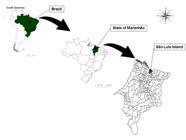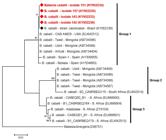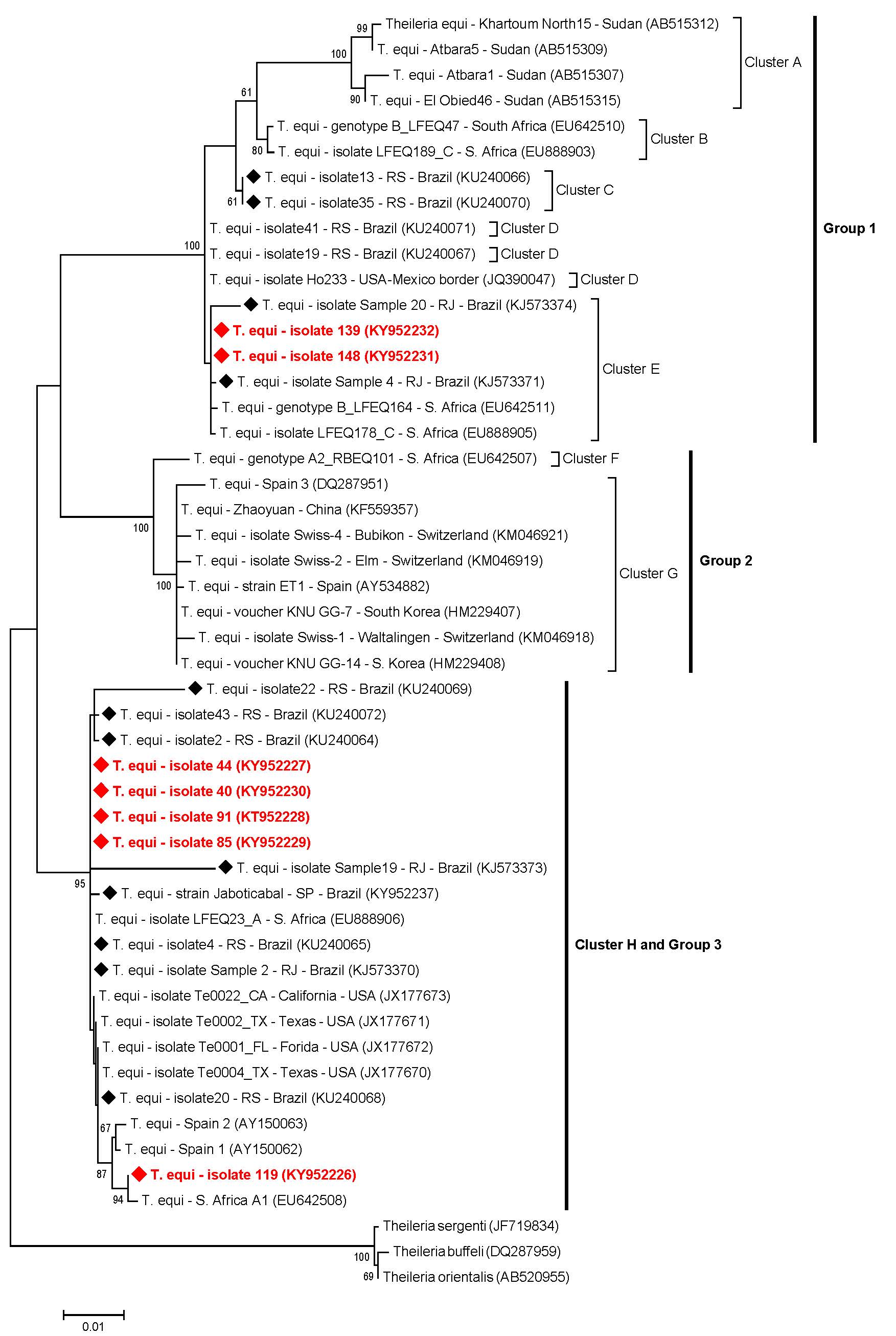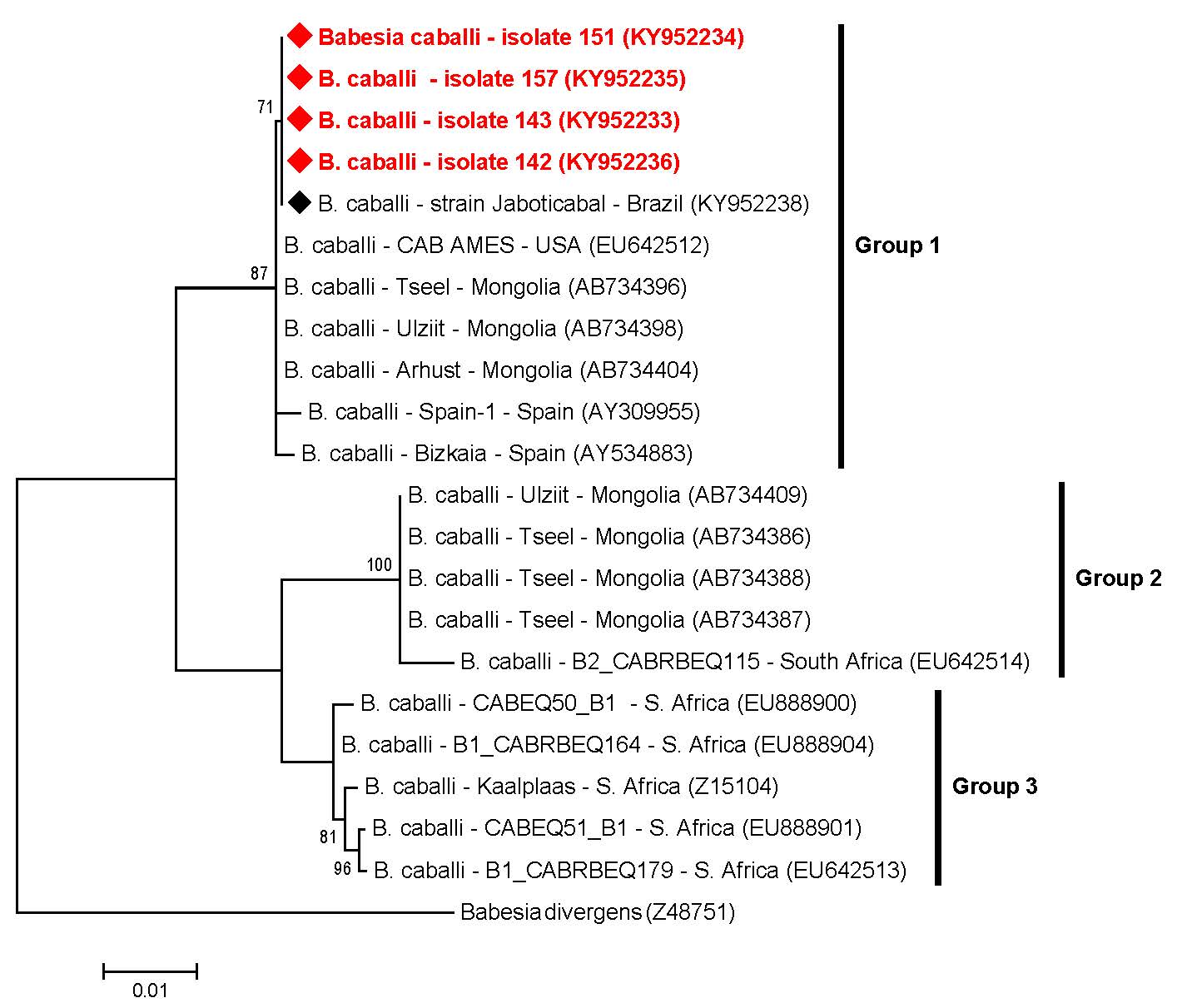Abstract
Equine piroplasmosisis, a tick-borne disease caused by the intra-erythrocytic protozoans Babesia caballi and Theileria equi, has economic importance due to the international trade and the increased movement of horses all over the world. The goal of this study was to evaluate the occurrence of phylogenetic diversity of T. equi and B. caballi genotypes among infected equids from São Luís Island, state of Maranhão, northeastern Brazil. Between December of 2011 and June of 2012, EDTA-blood and serum samples were collected from 139 equids (90 donkeys, 39 horses and 10 mules). From 139 serum samples submitted to ELISA assay, IgG antibodies to T. equi and B. caballi were detected in 19.4% (27/139) and 25.2% (35/139), respectively. Among sampled animals, 21.6% (30/139) and 55.4% (77/139) were positive for cPCR assays for T. equi and B. caballi, based on ema-1 and rap-1 genes, respectively. Overall, the T. equi sequences (n=7) submitted to Maximum Likelihood analysis (based on a 18S rRNA fragment of 1700 bp after alignment) grouped into three main groups, which were subdivided in eight clusters. The present work showed that different genotypes of T. equi and B. caballi circulate among equids in Brazil.
Keywords:
Babesia caballi; Theileria equi; phylogeny; 18S rRNA

 Thumbnail
Thumbnail
 Thumbnail
Thumbnail
 Thumbnail
Thumbnail


